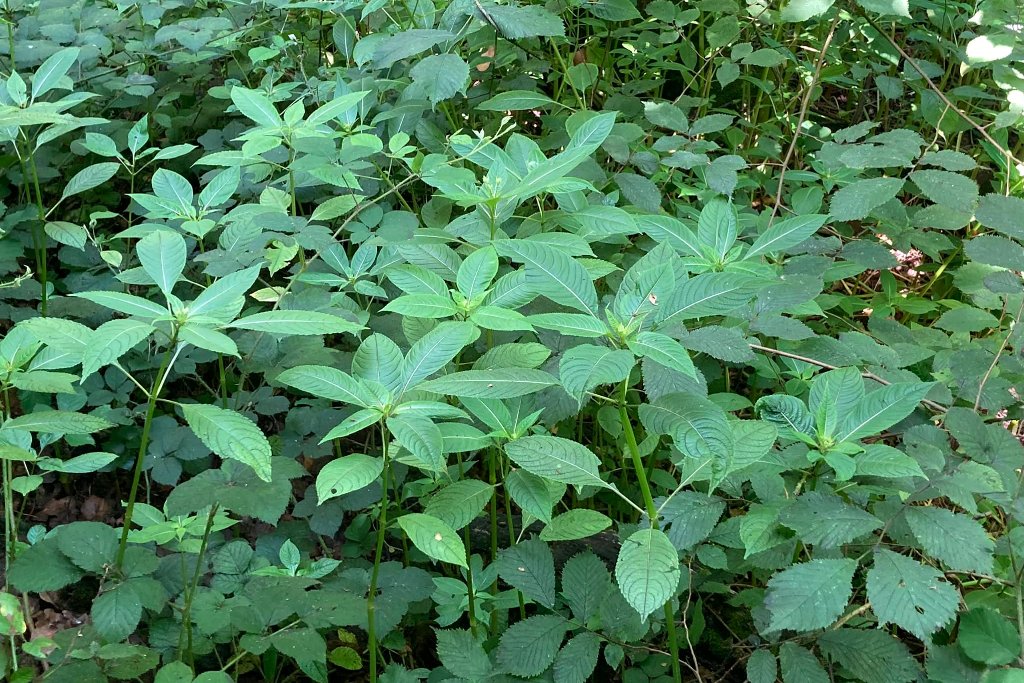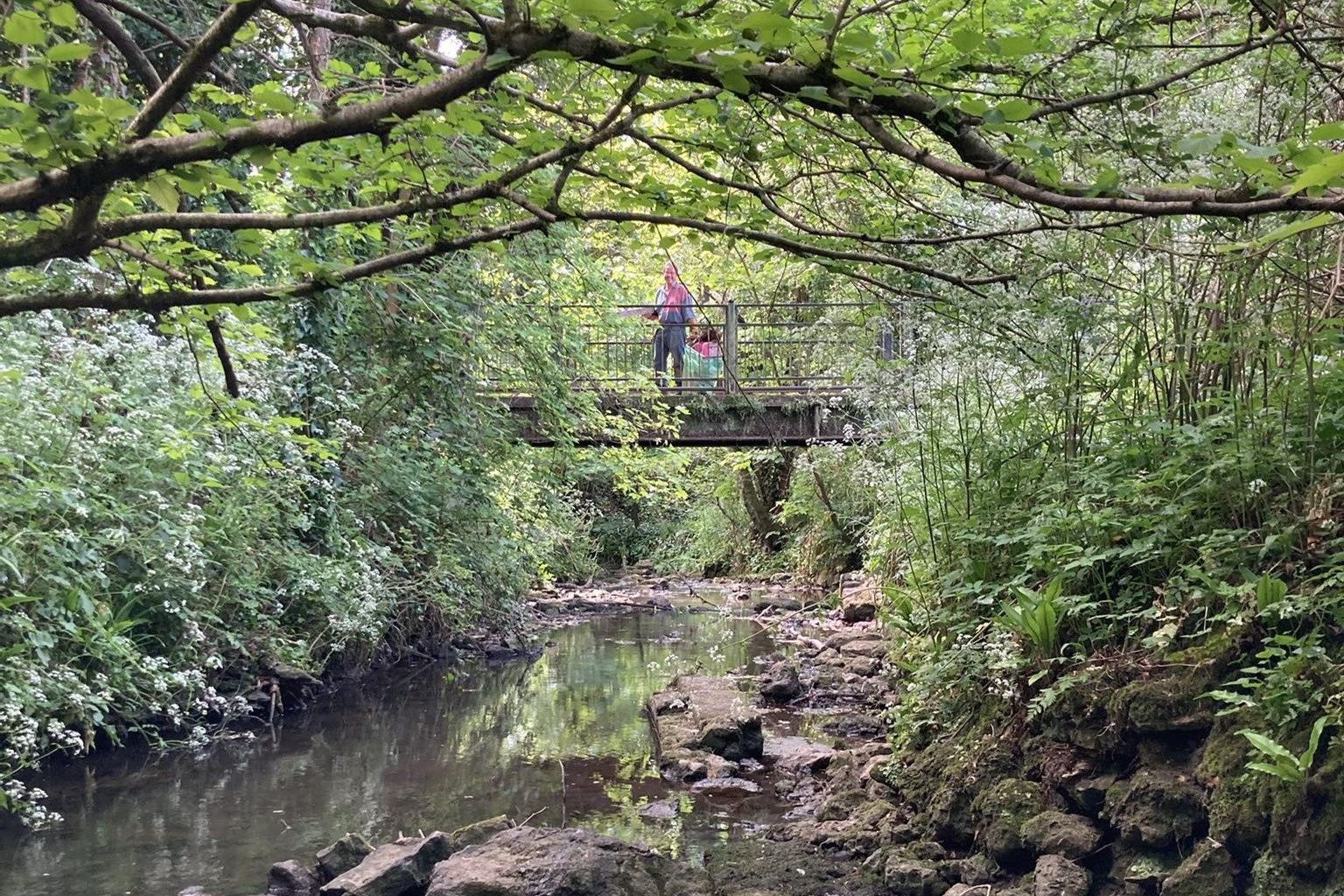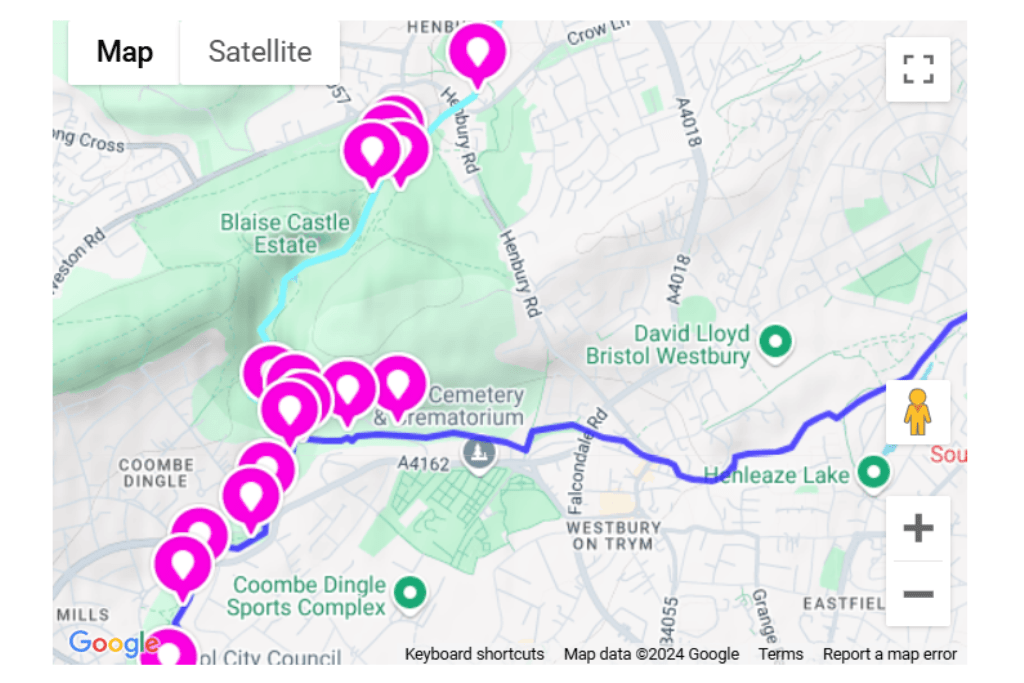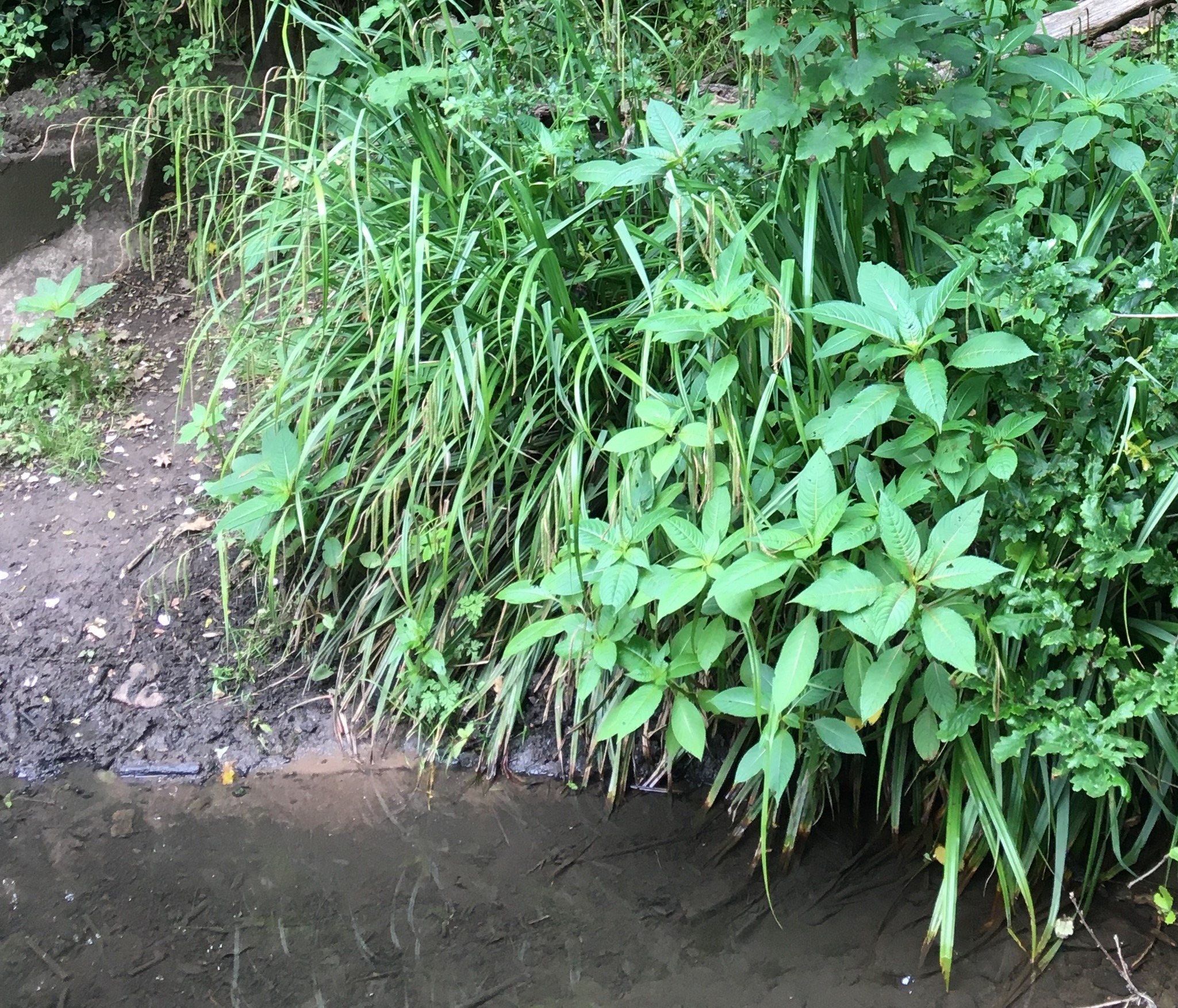Himalayan Balsam (balsam) is native to the Western Himalayas and since its introduction in the nineteenth century has spread throughout the British Isles. It is an invasive plant and highly successful at colonising river systems, suppressing our native plants. Balsam is the tallest annual plant found in the British Isles, growing to more than 2-3 m in height. Each plant can produce 800 seeds which are released explosively from the seed pods, reaching distances of up to 7m. The seeds can travel downstream and colonise new areas each year. The seeds remain viable for some years if they do not germinate straight away.
Removing balsam is not easy. To be a success, all the balsam in the river system needs to be eliminated and the area monitored continuously thereafter to prevent any rogue plants from recolonising. At their second meeting, in March 2021, Trout in the Trym agreed that one of their projects would be to remove all the visible Himalayan Balsam. “Balsam bashing” sessions are carried out by several local groups.
Identifying Himalayan Balsam

Stems: pinky red (when mature), hollow, sappy, brittle and jointed. Branches arise from the stem joints.
Leaves: serrated edges, stalked, shiny, dark green with a reddish midrib. They are opposite or in whorls of three.
Flowers: purplish pink to pale pink, carried on long stalks from June to October.
Seeds: 4 -7 mm turning from white to dark brown or black and carried up to 16 per pod.

How to help
Balsam bashing
Sustainable Westbury-on-Trym (SusWot) have balsam bashing or river cleaning sessions on Fridays from 10am to 12 noon and on Sundays from 11am to 1pm, weather permitting. If you would like to get involved, please contact SusWoT.
Report sightings
You can report sightings of Himalayan Balsam to us using our monitoring form.
And if you’ve been kind enough to remove the balsam, we also have a progress report form.
Latest balsam bashing posts
-

Roach and perch spotted in the Trym
Trout in the Trym and SusWot volunteers had a productive river cleaning and balsam pulling session this morning.
-

Balsam Map 2022
Last year, more than 110 volunteers spent 750 hours finding and removing the Himalayan Balsam from the whole of the River Trym and Hazel Brook. The map below shows where we found the most balsam and where we will need to concentrate our efforts this year.
-

This year, it’s all about the Balsam
We’ve made a great start with over 80 people getting involved in our first events and were delighted to be joined by the Lord Mayor in Blaise Estate.